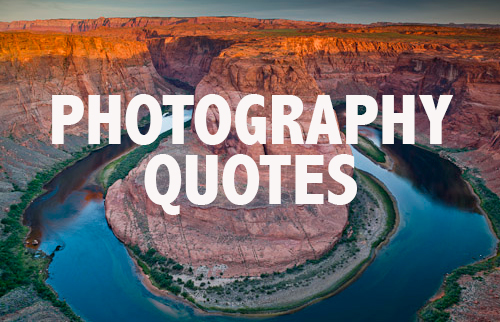Most modern digital cameras have two ways to let the user see what he/she is going to shoot and to compose their images. The first way is using the viewfinder, and the second way is using the LCD screen on the back of the camera.
Although choosing between the two ways depends upon your personal preferences, the shooting conditions, and the subject. However, are there any advantages to using one or the other?
In this article, we will explain the differences between them, cover the pros and cons of both options, and we will explain why you might prefer to use one over the other.

Photo by Phil Nguyen
What is a viewfinder?
A viewfinder is one of the most basic elements of any camera, it is the part of the camera that you hold up to your eye and look through it to preview an image before you take your shot. There are two types: Optical Viewfinder (OVF), which is usually found only on DSLR cameras, and electronic viewfinder (EVF), which is common in a compact, bridge, and mirrorless cameras.
Using the viewfinder has the following pros
- It can be used in bright light conditions
- Holding your camera against your face makes things more stabilized.
- Using your camera’s viewfinder makes it easier to follow a moving subject.
Optical viewfinder (OVF)
Optical viewfinders (OVFs) are part of the known design of the DSLR cameras. It presents an unfiltered and unaltered view of the scene as you compose your shot. A DSLR (Digital Single Lens Reflex camera) is so-called because it has a reflex mirror. This reflects light coming in through the lens up into an optical viewfinder (OVF) via a pentaprism that ensures you see the scene the right way round through the camera’s eyepiece. This means that with an OVF you are seeing what the lens sees, reflected but unprocessed.

Looking through an optical viewfinder is no different than looking through a window: nothing is changed in any way, shape, or form. An OVF lets you see exactly what your shot will look like, and it shows you a world that’s clear and contrasty, and real.
Pros
- OVFs have no issue with accurate color rendition or screen refresh rates, nor do they struggle in low light; they are just like windows. Camera manufacturers provide the viewfinders with information along the bottom of the screen, such as an exposure bar, key camera settings, etc. OVFs also have indicators for focus points as well as framing guides.
Cons
- A phenomenon is known as viewfinder blackout (You can’t see the image while pressing the shutter button), because, the mirror in a DSLR camera flips up and out of the way to let light pass through to the image sensor. During this process, the OVF goes completely dark. It is not an important issue, but when you are shooting fast-moving subjects, the short viewfinder blackout period can be enough for the subject to move around quite a bit.
- The OVF sees what your eyes see, which is not necessarily what your camera sensor sees.
Electronic viewfinder (EVF)
In a mirrorless camera design, the mirror and the pentaprism are removed from the design, so there is no optical viewfinder. Instead, an electronic viewfinder (EVF) is adapted.

The electronic viewfinder (EVF) uses the information from the imaging sensor to display an image on a small LCD or OLED screen. This means that an EVF shows the image that the sensor outputs, which can be significantly different from the view through the lens.
Pros
- Electronic viewfinders will show exactly what your scene will look like when photographed, and let you see instantly, in real-time, whether your shot is exposed correctly or not.
- You can see many data like a live histogram, highlighted in-focus areas (i.e., focus peaking), focus guides, and more.
- You can preview the scene in different modes, including black and white.
- It removes much of the guesswork inherent in OVFs.
Cons
- If you wear glasses, it may be hard to use the viewfinder. However, many cameras have a built-in diopter that can help make it easier to use with glasses.
- Viewfinders are smaller compared to LCD screens. As a result, you may not be able to see everything you’re capturing in the viewfinder accurately. This drawback is very important for photographers who want to preview every single detail when taking a picture.

Photo by Lukas Hartmann
The LCD screen
Both modern DSLR and mirrorless cameras have a back screen that you can use instead of the viewfinder.
With a mirrorless camera, the camera uses exactly the same technology to display an image in the EVF as on the LCD on the back of the camera.
However, it is a completely different matter when it comes to DSLR, although it is still possible to compose images on the rear screen in what is known as Live View mode.
When you switch a DSLR to Live View mode, the reflex mirror is lifted out of the way and the shutter is opened. Light can now pass through to the CMOS sensor, where the image is formed, and this is displayed live on the rear LCD display. In this way, Live View works just like using a mirrorless camera.
Pros
- When using the LCD screen you can zoom in close on a specific area to make sure it is focused and can easily judge whether it is tack sharp or just a bit fuzzy. For most DSLRs, there will be an option in one of the menus to enable a button on your camera to zoom in during Live View and even set the percentage of zoom which tells you how much it will magnify the image.
- When you are shooting at a lower or higher angle (not at eye level), framing can be much more difficult. Many people can’t take a picture while lying on the ground using a viewfinder. This is where LCD screens come in. Flexible LCDs make it easier for you to capture images when you can’t reach awkward angles.
- Some modern cameras have the ability to do various types of effects like selective coloring, miniature, and black-and-white, among many others. Think of them as though you are adding filters, but in real-time. Using the LCD screen allows you to experiment with different types of creative image effects, and see how they can affect your photography before you even click the shutter.
- It offers a set of lines dividing the screen up into thirds (nine segments). This “rule of thirds” grid is helpful in composition.
- The LCD screen has a distinct advantage in low light where the image on the LCD will be brightened so it is easier to see your subject and compose, whereas the viewfinder will become dim as the light fades.
- Can instantly playback a shot.
Cons
- The biggest drawback with LCD screens is probably shooting in sunlight. Depending on the quality of the screen, you may not be able to use it in bright sunshine because of the glare. All you see are reflections off the screen. In addition, the crystals contained within LCD screens tend to flare in bright sunlight, making the situation worse.
- LCD screens are made brighter, so they can easily overexpose your image.
- Holding the camera at arm’s length while looking at the LCD screen, and then keeping the camera steady while zooming in on a subject takes effort. When you use the LCD screen this way, you often end up with a blurry image. It is better to use a tripod in this situation.
- Another significant issue is battery life. Using the LCD screen to compose shots drains the camera batteries more quickly than using the viewfinder.

Photo by Burak Kebaber
Conclusion
In most cases, it is best to use the viewfinder. However, if you like the convenience of an LCD, or you wear glasses, use the LCD. It is mostly a matter of personal preference.
Using an LCD screen is most useful when shooting static subjects as looking at the rear LCD panel at arm’s length and trying to take pictures is not recommended. Instead, the camera should ideally be placed on a tripod to allow the full benefits to be attained. This makes the LCD screen perfectly suited to still life, landscape, architectural photography, and EOS Movie shooting.
Related posts
Difference between DSLR and Mirrorless Cameras
What Is Live View In DSLR Cameras
Thanks for reading, I hope you enjoyed the article, in case you have any questions just drop them below & I will be happy to answer you.
The feature Photo by mohamad kazzeh
If you enjoy the site, don’t forget to subscribe, we will only inform you when a new article is posted.









So glad to discover your blog here. Informative and well written!
I appreciate your comment, and you are always welcomed
Wow! What an insightful article on photography! I enjoyed the superb explanation, along with the diagrams. This felt more like taking a photography class. The explanations and descriptions were written; in a way to make it so easy to understand.
I´ve always been interested in photography, but it´s something that I haven´t pursued yet.
What camera would you recommend for a beginner, who would like quality pictures but with a camera that´s not intimidating?
I am very glad you find the article useful for you, I wrote a couple of posts about the best camera for beginners, and I advise you to read them:
What Is The Best Mirrorless Cameras Under $1000 – 2021 List!
What Is The Best DSLR Camera For Beginners
Thanks for your comment
It’s incredible how cameras have progressed over the decades and that there are so many different types and parts to a camera to get the perfect photo.
You mention about wearing glasses whilst using a camera and this is something I’ve never thought about when it comes to using the viewfinder but great that cameras have an adaption to make this easier.
My brother is a photographer and works in advertising. He has several different types of cameras for close up work.
He will find your article very interesting too so I will share it with him.
Thanks for your comment!